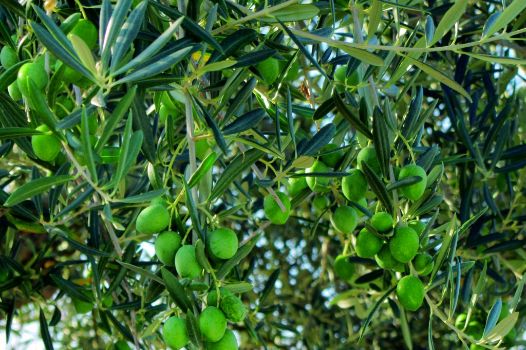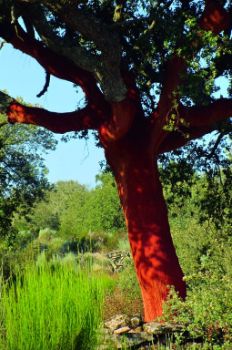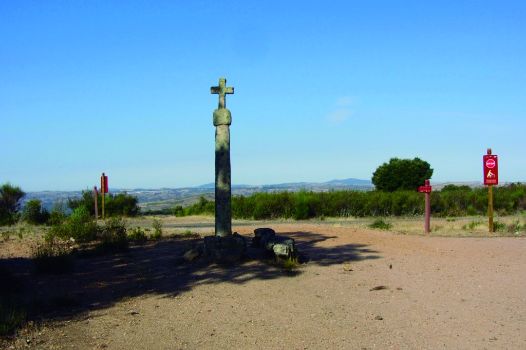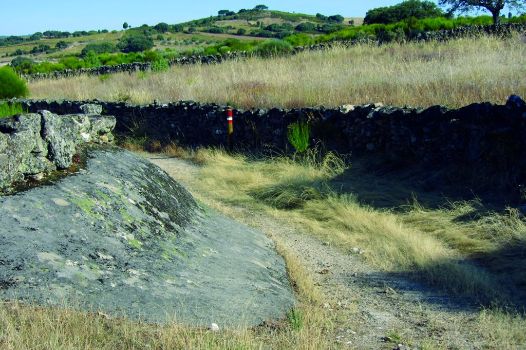Net of Natural
Trails

Stage 30: Fornillos de Fermoselle - Pinilla de Fermoselle
Description
Amidst rockrose and cork oaks
The climate along the River Duero varies greatly from the cold summits of Picos de Urbión to the Mediterranean ecosystem of Arribes. This variation induces changes in the landscape, vegetation and animals that inhabit these territories.
From mountain pinewoods to oak-ash forests, the Trail ventures now into a Stage where rockroses and cork oaks, two typical Mediterranean species, dot the route through Arribes del Duero.
The Stage begins in the town of Fornillos de Fermoselle, home to the church of San Martin de Tours, several Roman fountains and an old shoeing crush.

The route kicks off at Pocera Street, and leaves the town behind, skirting around a few small olive groves along Camino de los Arrieros, the traditional road leading to Pinilla de Fermoselle.
The path runs along a stretch flanked by stone walls covered in blackberries or "murras" (Rubus ulmifolius), as they are called locally, where Iberian lizards (Podarcis hispanica) bask in the sun.
The navelwort (Umbilicus pendulinus), with its round leaves and humble flowers, can be seen growing on the darker, cooler places along the walls. On the upper slabs, mosses (Bartramia sp.), golden everlasting (Helichrysum bracteatum), and white stonecrop (Sedum album) vie for space.

Past this stretch, the landscape changes drastically. The lands not used for agriculture are covered with rockroses (Cistus ladanifer) and cork oaks (Quercus suber), a species harvested for cork and acorns for livestock feed.
The route continues and crosses the ZA-L-2215, where the Cruz de la Figalina, a stone cross, stands. From here, the trail begins a gentle but steady descent towards the Portuguese bank of the Duero on the horizon. On a clear day, one can see the Portuguese town of Urrós.
The route continues on an easy path, flanked by a landscape of scrubland and scattered holm oaks. These scrub thickets host myriad small animals. Woodchat Shrikes (Lanius senator) and snub-nosed vipers (Vipera latasti) prey on lizards, mice and small birds. In turn, Sardinian Warblers (Sylvia cantillans) and numerous spiders feast on insects attracted by the nectar of flowers.

Before crossing again the ZA-L-2215, the path opens up, offering a beautiful view of the town of Pinilla de Fermoselle. After crossing the road, the route continues for about 200 metres, before it turns onto the traditional path.
The presence of tall junipers (Juniperus oxycedrus and J. communis) is quite a surprise, adding to the charm of the sweeping view. The route winds downwards until it reaches a crossroads, where it turns right along a stone wall that leans on a granite outcrop.
From here, the Nature Trail heads down to Pilos Creek, and passes next to a few private farmsteads that are quite close to the end of the route. One can enjoy again views of the town of Pinilla de Fermoselle in this final stretch.
The Stage arrives at Pinilla de Fermoselle, where it ends next to a mulberry tree on a granite block near the church.
Sites of interest
Profile

Highlights
Further information
The cork tree
The cork oak is medium-sized and less than 20 metres in height, with more or less evergreen leaves, which are dark green above and whitish below. The adult tree has a thick trunk and a broad crown. The fruit is an acorn similar to that of the holm oak but less sweet.
The cork oak has a very thick, spongy and light-weight bark known as cork. The purpose of the cork is to provide natural protection against the frequent forest fires that occur in the Mediterranean forests, and against insects.
The bark of the cork oak has been used since time immemorial for crafts and industrial uses. It is used to manufacture corks for bottles, beehives, parquet and other construction materials, automotive gaskets, footwear, garments and other everyday items. Indeed, cork is used in the space shuttles for thermal insulation.






